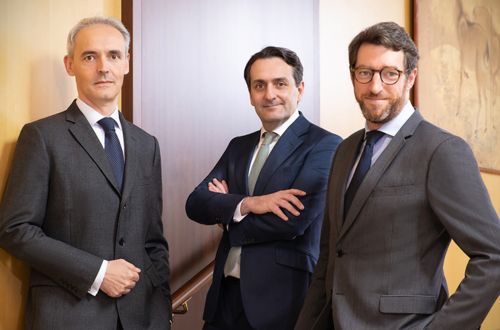More sustainable portfolios thanks to green structured products
Article by Sylveline Besson, Head of Capital Markets at Indosuez in Switzerland, Asia and the Middle East, for Sphere magazine.
For Sylveline Besson, structured products now have a place in asset allocations that aim to meet the challenges of sustainable finance. With an increasingly wide and innovative offering, these products complement the range of traditional investments that already meet sustainability criteria.
Collective awareness is working to adapt to the new sustainability situation. Finance, in its perpetual quest for innovation, is of course no exception to the rule as it constantly adopts new approaches to satisfy a clientele that is increasingly sensitive to responsible investment. For example, 95% of millennials are considering investing according to environmental, social and governance (ESG) criteria. This figure alone makes it easy to understand what tomorrow's standard will be.
Why is sustainable finance so popular?
Climate change is now considered a major challenge and investors are increasingly willing to support companies that are ready to tackle it. As a result of the pandemic, most governments have adopted economic stimulus packages of unprecedented scale, promoting the ecological transition. In terms of financial instruments, there is also growing interest in green or social bonds, where the funds raised are used to finance environmental and/or social projects, such as energy efficiency, affordable housing or sustainable food. Why the growing interest? Because they allow investors to give more meaning to their investments and to participate in responsible growth, while ensuring better consideration of financial and extra-financial risks. It is today a demand that is strongly expressed by investors on all continents.
What is the definition of green structured product?
A green structured product offers similar financial characteristics to a standard structured product. It is a debt security issued by a financial institution, whose performance is linked to the performance of underlying assets, such as a basket of equities or a stock index. There are two differences: first, the underlying assets must have a strong ESG rating determined by independent experts. Second, the bond issued and integrated in the product must finance projects related to sustainability issues, such as solar power plants, wind farms, public transport, green buildings or projects related to equality, health or biodiversity. Thanks to this second criterion, a green structured product is not necessarily indexed to equity markets, but can be linked to interest rates or other underlyings. The issuer's commitment is very important in this process, as it gives impact to the investment made by investors. It is with this ambition that Crédit Agricole CIB, which has been a leading global arranger of green, sociable and sustainable bonds for many years, offers a green issuance programme for structured products specifically designed to refinance assets that contribute to the fight against climate change and the transition to a low-carbon economy.
More recently, we have also seen the emergence of "solidarity" structured products, where subscription implies a donation by the investment bank to charities or organisations involved in environmental or philanthropic causes. As such, the products can offer financial characteristics that are slightly less attractive than a standard product, but can translate into additional meaning and impact to clients' investments.
What role can this type of investment play in an asset allocation?
For investors, structured products offer an interesting solution in many respects thanks to their asymmetric profile, contribution to diversification and risk mitigation within a portfolio. Products with ESG criteria obviously have these same advantages. In addition, companies that are recognised for their ESG commitment often outperform peers in their respective sectors due to their good governance. Beyond this economic advantage, companies in which end customers place their trust are likely to be among the winners of the responsible transformation, whether in terms of the technological revolution or adaptation to new regulations.
Another important point is the monitoring of the investment made available by the product issuer. The final client can now, through regular reporting, know and measure the real impact of his investment through the concrete projects carried out on the ground. This is an advantage over other investments that only meet sustainability criteria.
Points of vigilance and prospects
As with any investment, structured products carry their share of risk, such as the market risk associated with the underlying assets. As debt products issued by financial institutions, they also carry the credit risk of the issuer. But we have to keep in mind that the industry is evolving, and the rules are not yet fully established. On the one hand, the processes for assessing the ESG criteria of underlying assets may differ from one player to another. It is therefore recommended to turn to a trusted partner, based on a transparent methodology or recognised standards such as the framework developed by the Green Bond Principles. These issues are also being addressed by umbrella organisations such as the Swiss Structured Products Association (SSPA), which has just set up a new working group to draw up a code of conduct to define the criteria for green structured products. After a major taxonomy project carried out in 2020 to harmonise the names of structured products in a more transparent manner, the SSPA should soon be able to propose a framework that will make green structured products more comparable and therefore more attractive to end clients.
In order to meet the challenges of sustainable development, there is no doubt that structured products, a new piece of the puzzle in an efficient green allocation, will acquire an important place in the portfolios of clients seeking meaning in their investment approach.
Published in Publisphere magazine - September/November 2021
September 21, 2021




